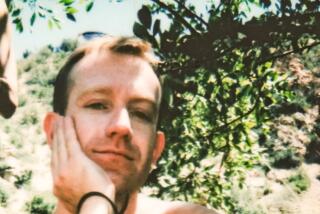Teen hero of ‘Half Bad’ holds the magic
Toward the end of “Half Bad,” a debut young adult novel about battling witches by British author Sally Green, readers learn that the protagonist’s favorite book is “One Day in the Life of Ivan Denisovich,” the 1962 novel about life in a Soviet gulag. Why does he like it so much? another character asks him. “Because [Ivan] survives,” he answers flatly.
Likening the psychic terrain of young adulthood to a prison camp (where illusions die ignoble deaths and defying authority is a prerequisite for forging one’s identity) fits well within the dark, dystopian landscape of contemporary YA fiction. And as is so often the case with fantasy and science fiction, “Half Bad” simply ups the ante and literalizes the metaphor.
The novel is set in a recognizable present-day world in which the woods are bucolic but the government is invasively watchful, racial tensions are high, and might makes right.
Nathan, a young whet — or underage witch — is living with his grandmother and three half-siblings in the British countryside. The child of mixed parentage, Nathan is “half code,” in a world in which the high Council of White Witches has declared war on their Black counterparts. As a result, Black Witches have been hunted almost to extinction in Britain, where mere mortals (or “fains,” as they are known here) live blithely unaware of the sorcery in their midst.
Half-sister Jessica tortures Nathan with stories about the circumstances of his birth: His father — Marcus Edge, the most powerful and most evil Black Witch alive — forced himself on his mother before murdering her husband, then vanished before Nathan was born. His mother, distraught, committed suicide not long after.
And so now Nathan must travel to London annually for an assessment, in which the ruthless Council subjects him to a battery of tests meant to determine whether he will ultimately be classified as White or Black. For years, Nathan practices a passive resistance. He ends up shackled in a cage, which tells you something about how those in power tolerate even mild opposition — and about the high-stakes role Nathan will play in the book’s escalating conflict.
The first in a planned trilogy, “Half Bad” has already been sold in 42 countries and had movie rights optioned by Fox 2000. Publishers are clearly hoping for another “Harry Potter”-esque blockbuster, a “Hunger Games” or even “Divergent.” Green’s novel lacks the furious pace of the latter two and the lavish world building of the first. And though the hunt for a magical knife (one of only two weapons capable of killing Marcus) and Nathan’s quest to outsmart his persecutors and reunite with the father he can’t help but love drives much of the narrative, the story never quite attains an epic sweep.
Nathan’s grit and his longing are what sustains the book, which is particularly good with the tender cravings of first love and the gentle relationship he enjoys with his brother.
“‘Cause if I’m going to die in a cell,” Nathan vows, “I want to have something first. ... Every breath has to be precious and worth it and something important.”
Beaten down physically and emotionally, to endure he learns to be inured but not defined by bitterness. Nathan remains heroic, motivated by loyalty and distinguished by an ability to view people as individuals. Good and evil ostensibly face off in two warring factions, but the most potent conflict occurs within Nathan, struggling with his sinister legacy.
“Half Bad” is strongest when at its least fantastic, yet it still scores plenty of genre points, incorporating potions and portals and a rite of passage called the Giving, which also neatly serves as a ticking clock. To claim their power, each witch on his or her 17th birthday must drink the blood of a parent or grandparent. Any Black Witch denied the ceremony withers away within the year.
Like all half-codes, Nathan is forbidden to receive his Giving without permission of the Council. The unremitting enmity between the groups, governed by tribal mentalities and flavored with an Isaac/Ishmael-ish origin story, dates back centuries. For the Council to at last strike a definitive blow, they must bully Nathan into betraying those closest to him. That’s a story just as old and in some ways sums up how it feels to survive the drama of being a teenager.
Farrabee is a writer in Los Angeles.
Half Bad
Sally Green
Viking: 416 pp., $18.99, age 12 and up
More to Read
Sign up for our Book Club newsletter
Get the latest news, events and more from the Los Angeles Times Book Club, and help us get L.A. reading and talking.
You may occasionally receive promotional content from the Los Angeles Times.







